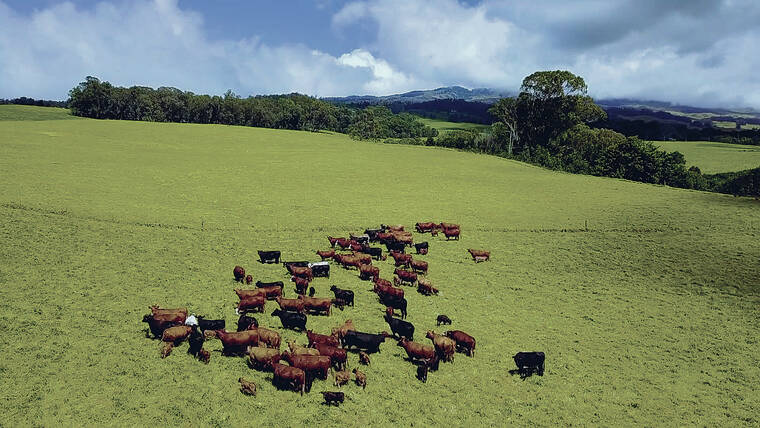Acoalition of Hawaii community groups and government
entities has scored a federal grant that will bring to the islands up to $40 million
to help farmers, ranchers and foresters implement “climate-smart” agricultural practices.
The U.S. Department of Agriculture grant also aims to establish stronger markets for local commodities produced using methods that reduce greenhouse gas emissions or store carbon.
“This is a big one. I’m pretty excited,” said University of Hawaii at Manoa associate professor Susan Crow, principal investigator for the grant.
Crow, a researcher in UH Manoa’s College of Tropical Agriculture and Human Resources, said the effort seeks to combat climate change through nature-based solutions in both wild and working lands, while reducing and reusing waste for fertilizer and soil amendments.
In doing so, the project aims to create a resilient and abundant food supply and provide more healthful food options that will ultimately create a healthier population.
Crow said that through investment and incentives, the coalition will work to overcome the usual barriers that act to discourage the production of climate-smart commodities.
Within the first year, she said, the coalition will provide millions of dollars in
direct financial assistance to dozens of producers to improve their sustainability practices in a campaign that will affect thousands of acres across the islands.
Among the individual climate-smart projects proposed are koa and sandalwood reforestation, incorporating trees into pastureland and improving farm nutrient management and redirecting waste streams into compost.
The project is one of 70 chosen in September from 450 proposals submitted to the USDA’s $2.8 billion Partnerships for Climate-Smart Commodities program, a Biden administration initiative to make the country’s agricultural sector more sustainable.
“We’ve been moving toward this kind of thing for a long time. I never imagined that a billion dollars would become available for this,” Crow said, adding that the dollar amount nearly tripled after the USDA was inundated with interest.
“We decided to go big and not focus on one commodity like a lot of other proposals,” she said.
The coalition that submitted the proposal represents a diverse group representing nearly all the sectors of Hawaii agriculture. “It’s an unusual group, a huge coalition that doesn’t usually come together. But they did for the good of the state,” Crow said.
The partnership includes the Hawaii Cattlemen’s Council, Oahu Resource Conservation and Development Council, Hawaii Farmers Union United, Kohala Center,
Pacific Gateway Center, Forest Solutions Inc., state Department of Land and Natural Resources Division of Forestry and Wildlife, Oahu Agriculture and Conservation Association, UH, University of Florida, Colorado State University, Natural Resource Data Solutions, Lynker Corp., Transforming Hawaii’s Food Systems Together, state Department of Agriculture and initiatives such as the Aloha + Challenge, Hawaii Greenhouse Gas Sequestration Task Force and FarmLink.
Crow, from CTAHR’s Department of Natural Resources and Environmental Management, said the project ultimately aims to create a thriving local market for locally produced food and other climate-smart products. There may even be the creation of an eco-label that indicates what you’re buying is not only Hawaii-made, but climate-smart.
“Climate change is such an existential threat that people often feel they can’t contribute to the solution as an individual. My hope is this project culminates in empowerment for people and a sense that individual choices are accessible for all,” she said.
Agriculture is an important part of the climate change equation, but it often gets left out, said Leah Laramee, coordinator of the state Climate Change Mitigation and Adaptation Commission.
“By supporting our farmers, foresters and ranchers with technical and financial assistance to implement climate-smart practices, we are reducing the amount of carbon going into the atmosphere, increasing the uptake of carbon and getting closer to our 2045 climate change goals,” Laramee told the UH Communications Office.








